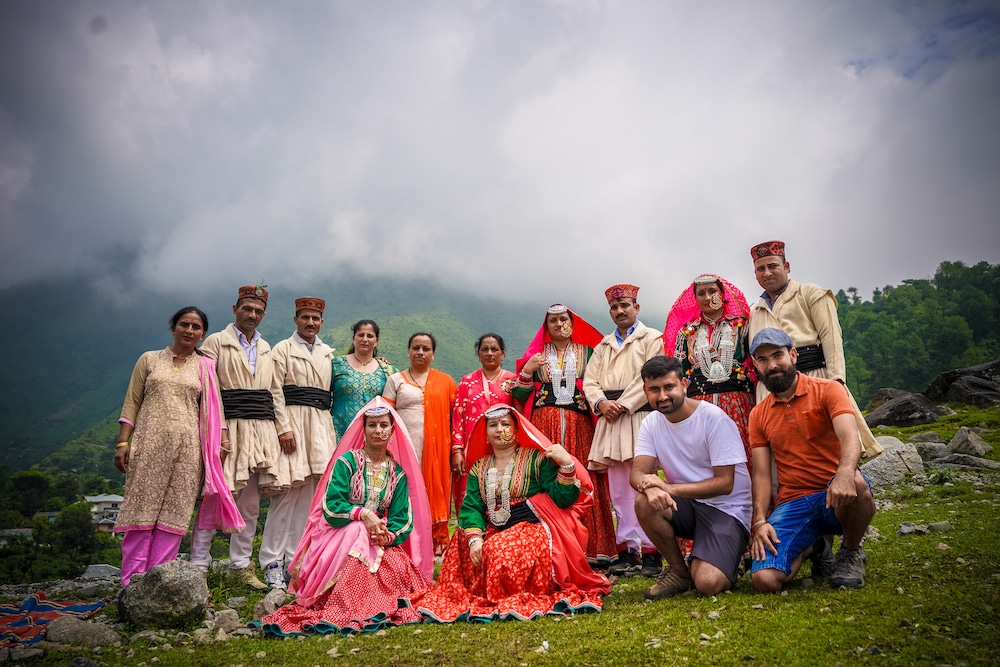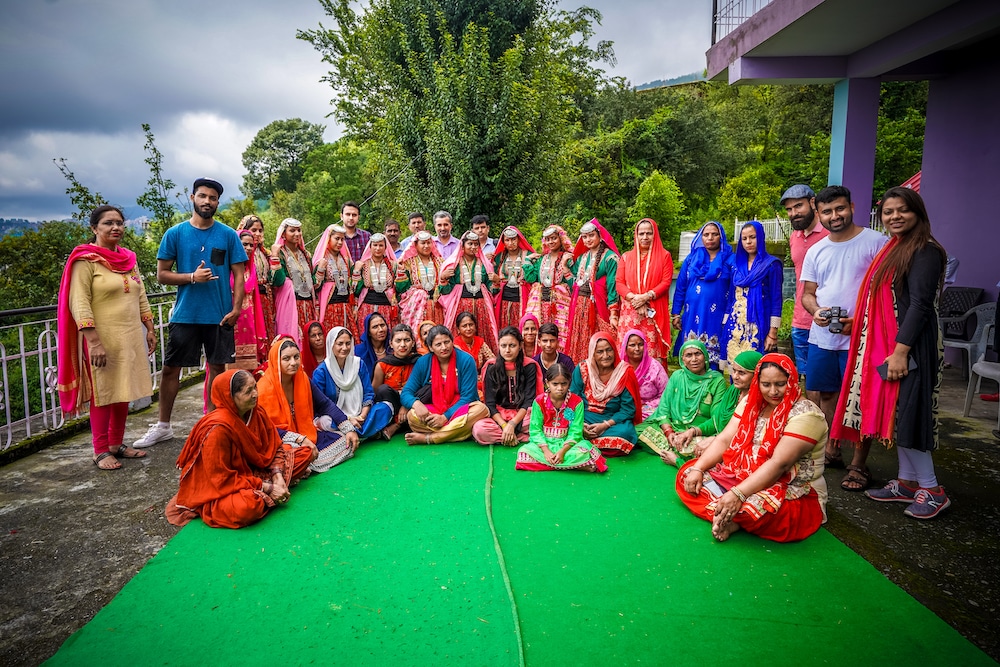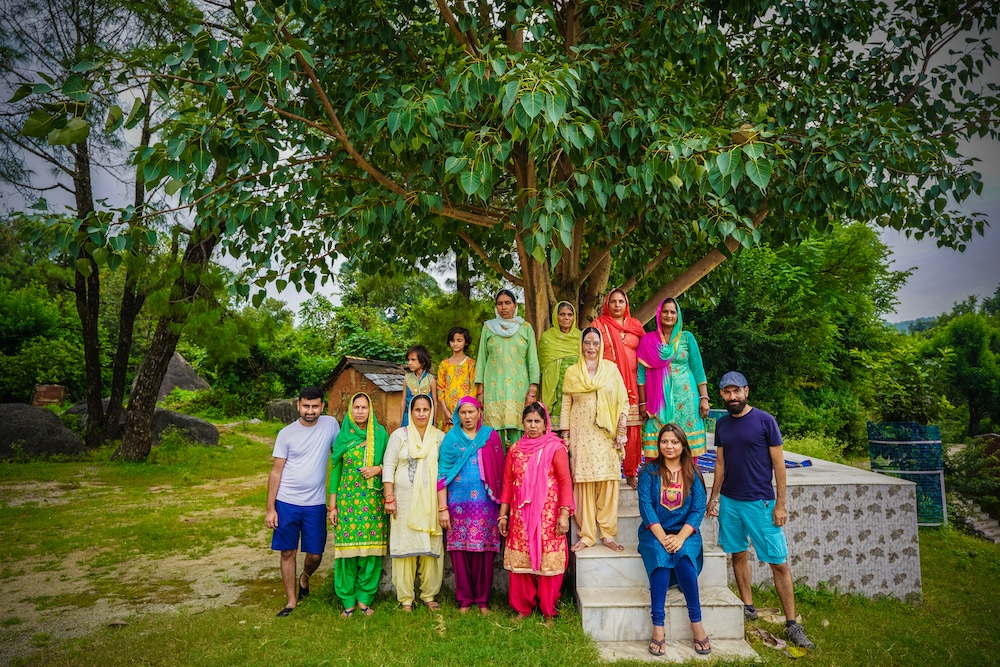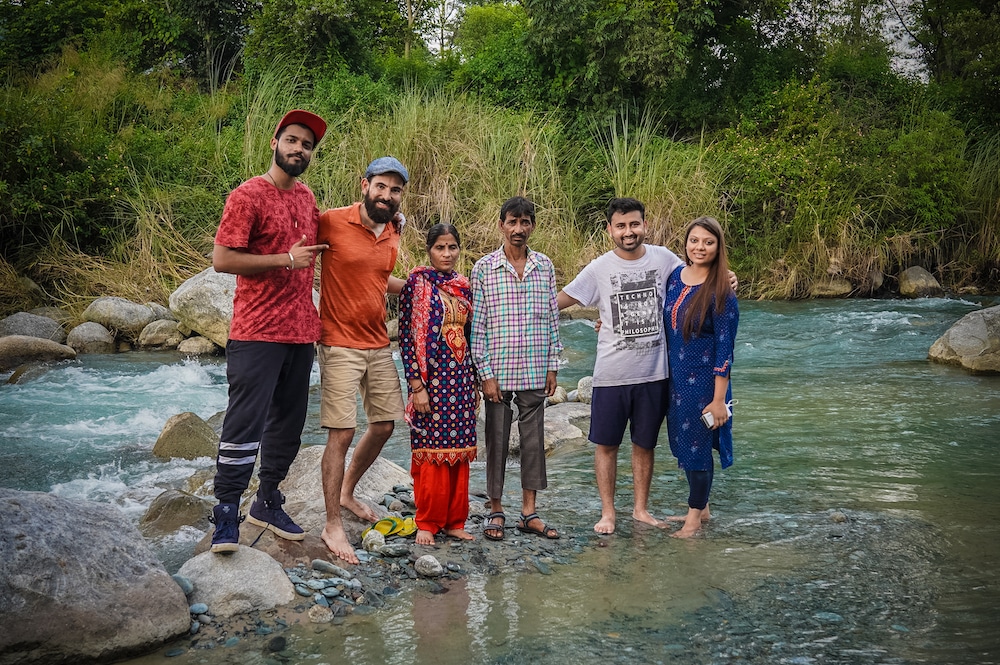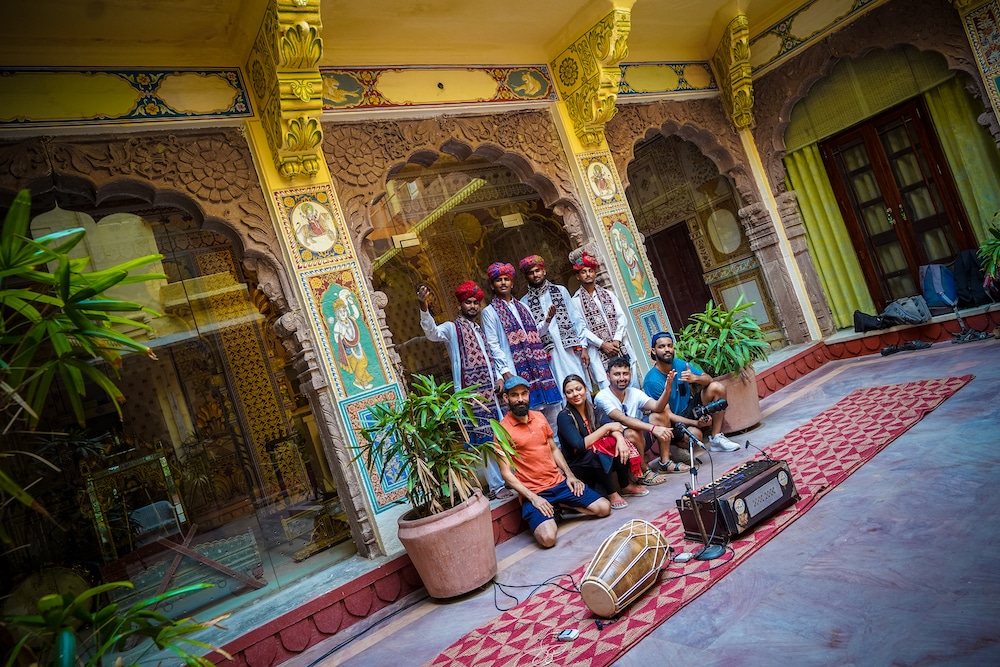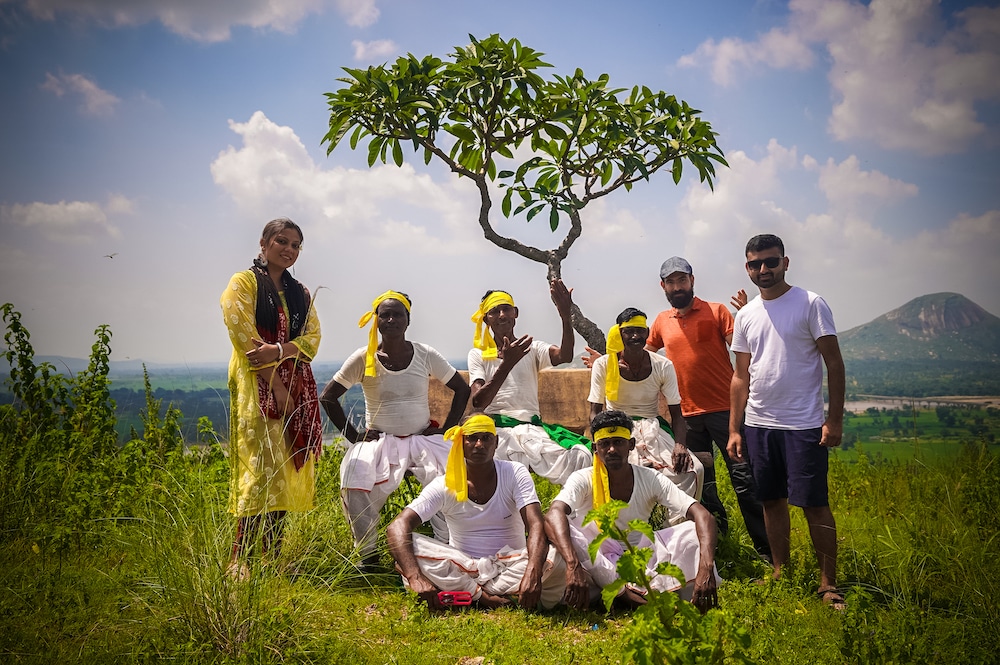
Folk and Festive
Upon the small hill of Silli in Ranchi, we reached with our team and equipment only to witness one of the most beautiful traditional folk Tussu performed by a talented group – Ashar Queri and others. They were dressed up in a simple vest with dhotis and colourful ribbons tied to him around his head, wrist, legs and instruments. We did the setup upon reaching on top of the hill with our wireless equipment getting ready to hear beautiful songs from them. While the set up was on the way to be put up in order, Ashar Queri told us that he is from a small village called Hajam in Jharkhand. His family as he recalls with pride has been known as farmers and singers for generations. He said he has been earning his living through farming, and experiencing the joy of life through music. Ashar learnt to sing from his father and grandfather who encouraged him to become part of a group and sing the vanishing village folk songs. Now his son too sings like his father. As we were setting up Ashar began singing:
Nadi pare diya na maa vida
Don’t get me married off across river
Suine pran uthe more kaandiya
Whenever I think I about this I become very sad
Nadi paare dile biyah jay yadi maa
If you will get me married across river
Mariya khabar dite deri habe
Then I wouldn’t get any news from you
The entire group consists of simple down to earth people who live their life with full joy and music accompanying them at every step of their lives. They were so surprised to see the variety of equipment that we had along with us and were quiet excited to use them. We asked the group if they had ever heard their songs as an audio clip, it was a no in the answer. So, after the recording, we made them listen to their track. It was the very first time in their lives that they had heard them singing in a recorded manner – a moment he will cherish forever. Until team Anahad recorded their songs they had no idea how they sound. Dreaming and hoping for the dying village songs and making them reach more people they began singing:
Gelo bela aree bhola mann
Oh innocent mind, the time has gone by
Oo re tor brethare maanus janam
Your birth as a human being has been wasted
Ahankaare andhkare din gelo tor akaran
You have spent your life in ego and darkness

